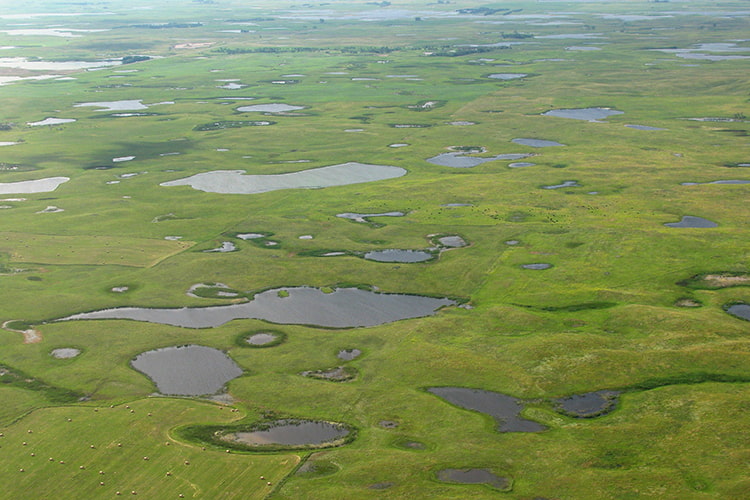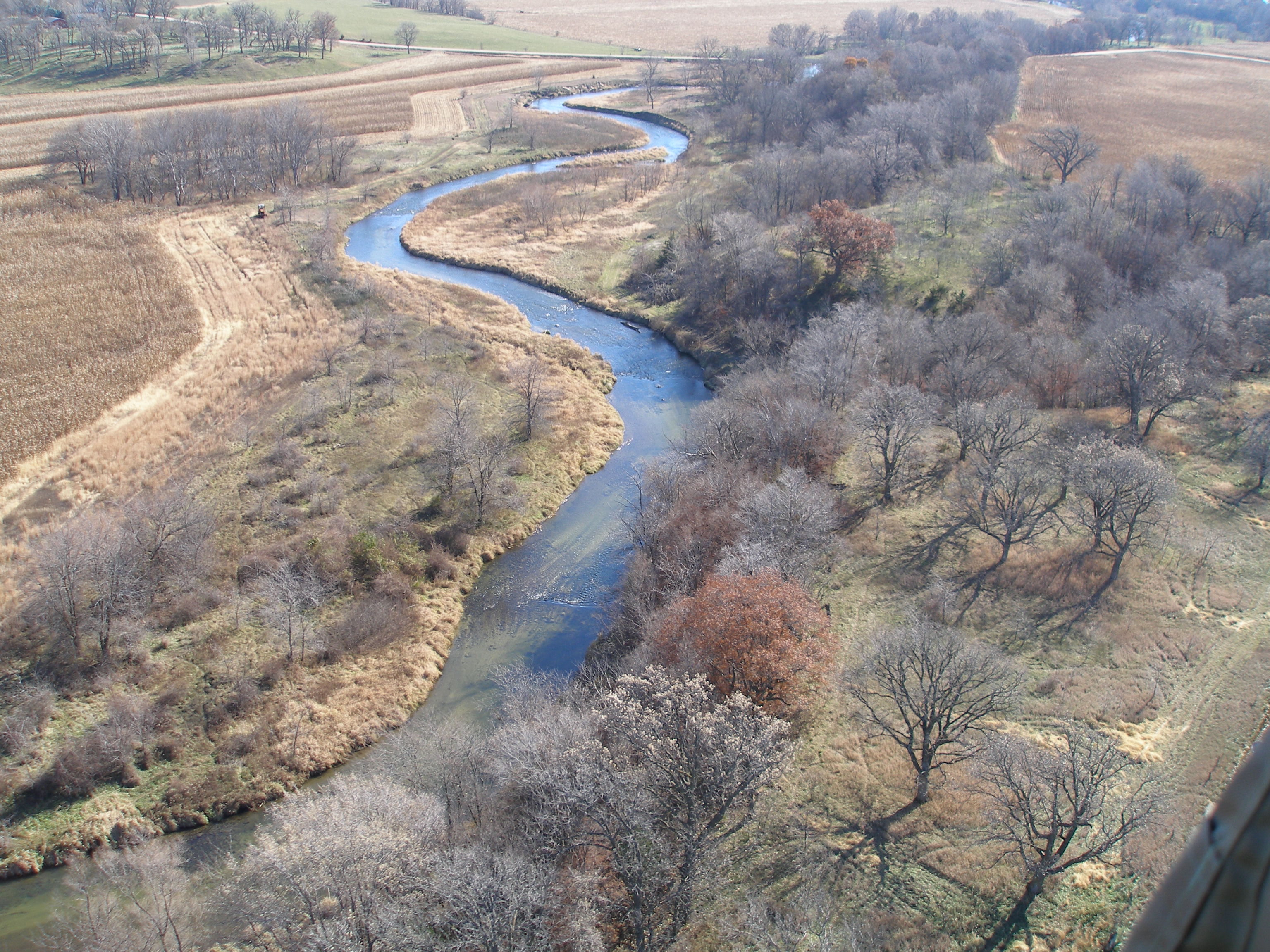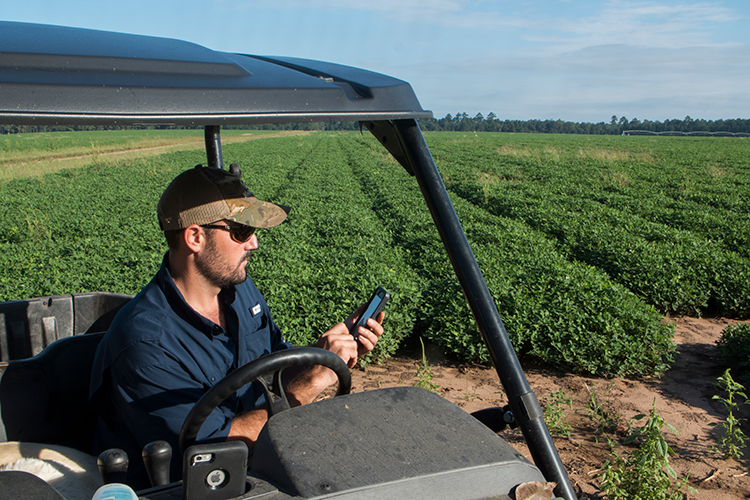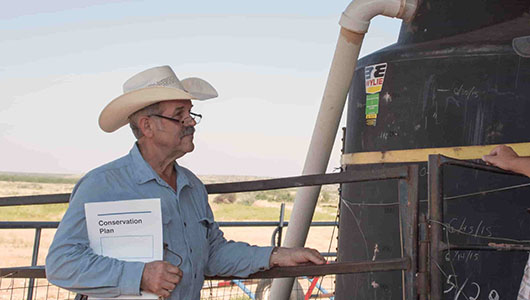Because so much of our land is devoted to agriculture, farmers have a vital role in protecting water quality. USDA has programs and practices that help farmers improve water quality while gaining efficiencies and reducing costs.
Fight Erosion
When soil stays in the field, it not only provides better soil for crop production, but also reduces sediment entering the water table.
Erosion fighting practices include:
- Cover crops
- No till or reduced till
- Crop rotation
Enhance Management
Management of use of fertilizers and pesticides to keep them on the field or pasture can reduce costs as well as potential for loss.
Water friendly management practices include:
- Integrated pest management
- Nutrient management
- Irrigation water management
Improve Filtration
In field practice can help reduce runoff, but filtering the runoff to remove sediment, chemicals, and waste can improve downstream water quality.
Practices that help filter runoff include:
- Filter strip
- Riparian forest buffer
- Bioreactor
Manage Animal Waste
Preventing animal waste from entering water sources is a key way to protect water quality.
Practices that manage animal waste include:
- Prescribed grazing
- Waste storage
- Waste management
Focus on Water Quality
Chesapeake Bay Watershed
Agricultural lands make up nearly 30% of the Chesapeake Bay watershed, which includes the District of Columbia and portions of Delaware, Maryland, New York, Pennsylvania, Virginia and West Virginia. This region has more than 83,000 farms responsible for more than $10 billion in agricultural production each year.
Between 2018 and 2020, NRCS helped farmers implement conservation on 1.26 million acres in the Bay watershed. That’s the size of Grand Canyon National Park. USDA will invest an additional $22.5 million in conservation assistance in fiscal year 2022 building on a $1.1 billion investment over the past decade.
Read more about NRCS’s work in the Chesapeake Bay watershed.
National Water Quality Initiative
The National Water Quality Initiative (NWQI) is USDA’s premiere water quality initiative. It accelerates on-farm conservation investments focused on improving water quality where it is most needed.
Since 2012, NRCS has worked with more than 6,000 producers to adopt conservation practices on more than 1.37 million acres in priority watersheds through NWQI. At least 19 impaired water bodies have been improved and subsequently scheduled for de-listing or otherwise removed from NWQI due to successful water quality improvements.
Learn more about watersheds that are part of NWQI’s current efforts.
Mississippi River Basin Healthy Watersheds Initiative
Launched in 2009, the 12-state Mississippi River Basin Healthy Watersheds Initiative (MRBI) helps landowners sustain America’s natural resources through voluntary conservation. States within the Mississippi River Basin have developed nutrient reduction strategies to minimize the contributions of nitrogen and phosphorus to surface waters within the basin, and ultimately to the Gulf of Mexico.
MRBI uses a small watershed approach to support the states’ reduction strategies. Avoiding, controlling and trapping practices are implemented to reduce the amount of nutrients flowing from agricultural land into waterways and to improve the resiliency of working lands. These targeted investments have increased the adoption of critical water quality conservation practices, such as cover crops, no-till, residue management, grassed waterways and nutrient management by over 30%.
Learn more about MRBI.
Great Lake Restoration Initiative
The Great Lake Restoration Initiative (GLRI) helps NRCS accelerate conservation efforts on private lands located in targeted watersheds throughout the Great Lakes region. Through GLRI, NRCS works with farmers and landowners to combat invasive species, protect watersheds and shorelines from non-point source pollution and restore wetlands and other habitat areas.
Practices implemented by farmers working in partnership with NRCS through GLRI have reduced phosphorus by over 1.1 million pounds in target areas since 2010.
Learn more about GLRI.
Additional Approaches
In addition to these initiatives, NRCS offers edge-of-field monitoring, which allows producers to measure the effects of conservation work on water quality. This helps farmers make informed decisions about efficiency, economic impacts, and yields. NRCS also supports market-based approaches to improve water quality.
Water Quality Practices for Working Lands
Cover Crops
The roots of cover crops make channels in the soil that improves its ability to take in water. Cover crops also build soil organic matter, hold soil in place that might otherwise erode, and feed soil organisms that provide valuable nutrients to cash crops during the traditional growing season.
2 minute video
Grassed Waterway
Grassed Waterway is a way of repurposing marginal lands to improve filtration of runoff and reduce erosion from farm land. It has the added benefit of creating riparian habitat.
2 minute video
No Till
We’ve learned that most operations do not need heavy tillage – or often any tillage at all – to produce healthy crops. Minimizing tillage can reduce soil erosion across your operation while saving time and money. Read the USDA blog story: Saving Money, Time and Soil: The Economics of No-Till Farming.
2 minute video
Find Your Local Service Center
USDA Service Centers are locations where you can connect with Farm Service Agency, Natural Resources Conservation Service, or Rural Development employees for your business needs. Enter your state and county below to find your local service center and agency offices. If this locator does not work in your browser, please visit offices.usda.gov.
Learn more about our Urban Service Centers.
Visit the Risk Management Agency website to find a regional or compliance office or to find an insurance agent near you.






